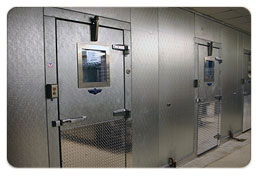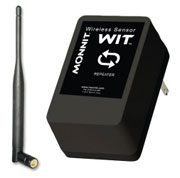|
Having trouble viewing this email? View it in your browser. |
||||

|
||||
|
||||

|
||||

|
||||
|
|

Let's take a look in our crystal ball to see what the future holds at Monnit? If we look carefully into our crystal ball we can see a new addition to the Monnit line of wireless sensors. The Monnit team has been hard at work developing new sensors, and we are proud to say that a Flex Sensor is in development right now. This sensor allows you to detect when the ribbon sensor is bent, and allows you to measure the amount of bend or flex being applied. This sensor will be customizable with various sizes and shapes of flex sensor ribbons or pads. This will be a great addtion to our wireless sensor line, so keep your eye on the horizon and this sensor will be here before you know it. |

Using wireless sensors to monitor the temperature in coolers and freezers. You have invested a lot of time and money in your food preparation business. A lot of that investment is from the purchase and operation of your food storage freezers and coolers, as well as the food that you keep stocked in them. What would happen if there was an extended power outage or a malfunction with one of your coolers when nobody was there to check it? How much food could you lose, and how would that affect your ability to prepare meals for your loyal customers? With Monnit Wireless Temperature Sensors you can have 24/7 monitoring of your freezers and coolers and enjoy the piece of mind that comes from knowing you will be immediately notified if the temperature is the slightest bit above your set threshold. You can also add multiple people to your notifications, so your maintenance or repair person can be notified immediately as well. You can avoid costly food spoilage and potential freezer damage by catching issues quickly before the issue has a chance to escalate. Make Sure Your Food Stays Cool with Monnit Wireless Sensors. |
by The WiSe Guys

Wireless Sensor Power Management When dealing with battery powered wireless sensors, there are a many factors that can affect the life span of the battery. We have compiled a list of useful tips to help you understand wireless sensor power management and improve the life of your wireless sensors' batteries. Battery Power Options Frequency of Transmissions Temperature Conditions Radio Interference and Transmission Retries |


Interested in LabVIEW Instrument Drivers for Monnit Wireless Sensors?
Let us know at info@monnit.com
All trademarks are property of their respective owners. © 2011 Monnit Corp. All Rights Reserved.
Monnit Corporation / ph 801-561-5555 / www.monnit.com






